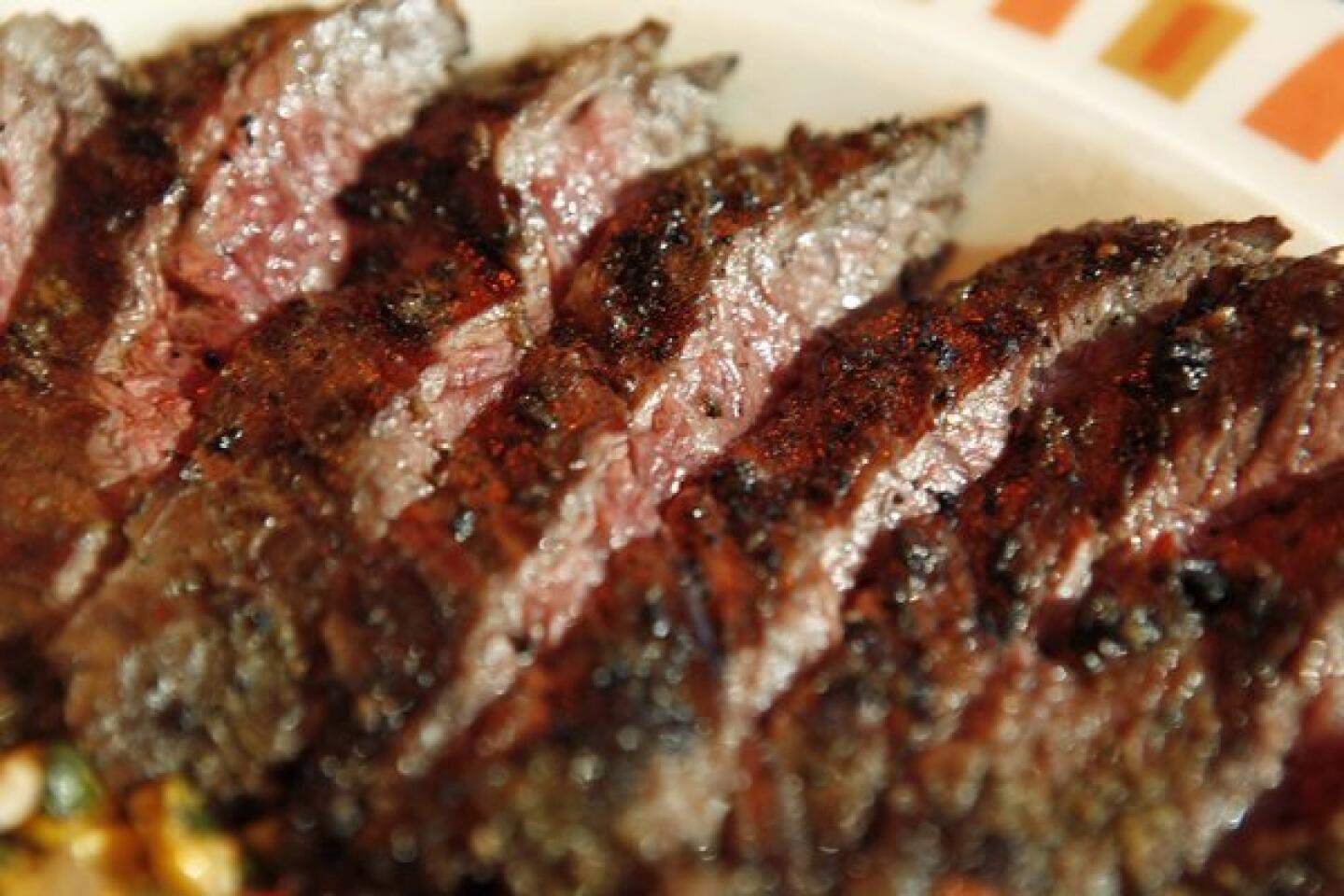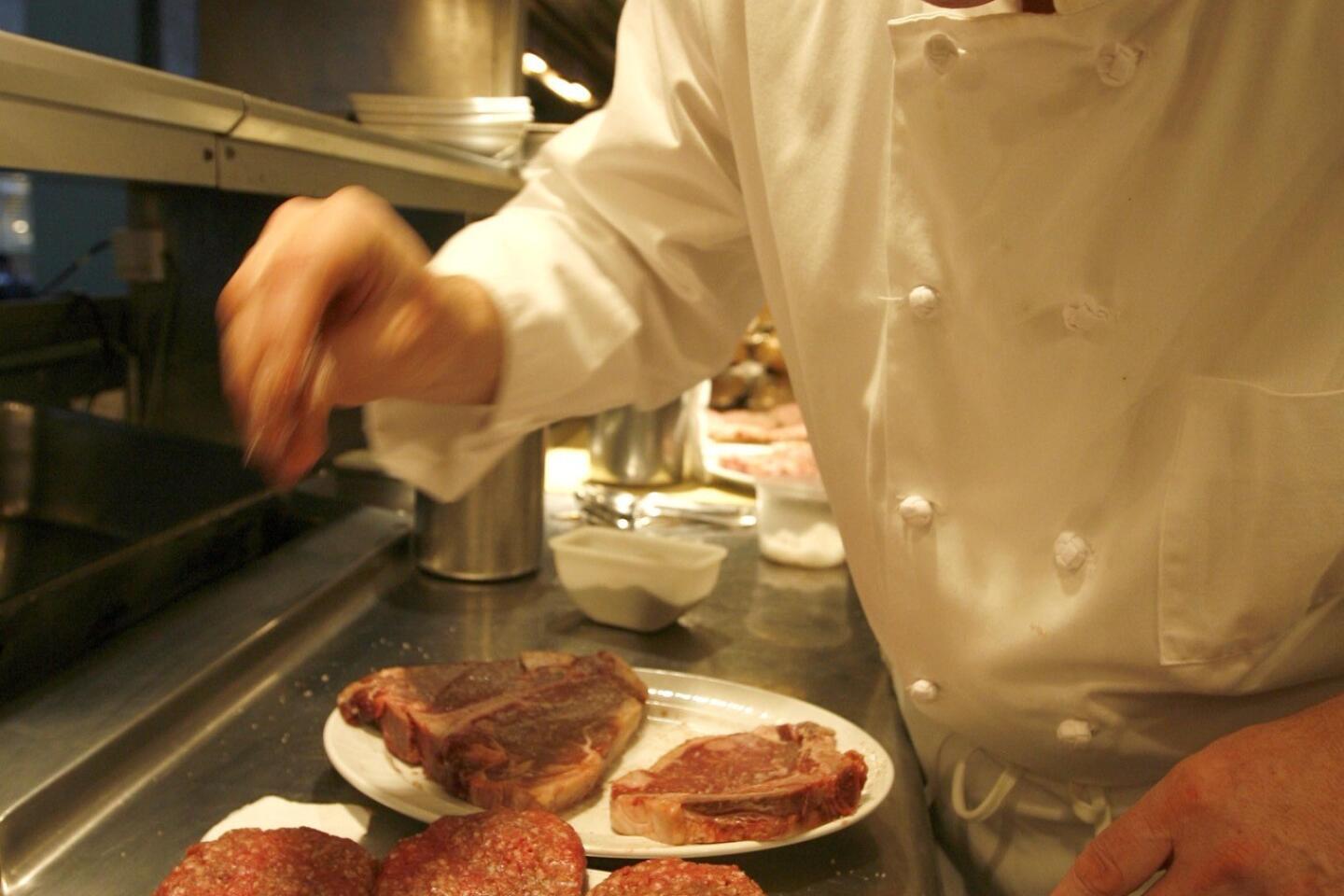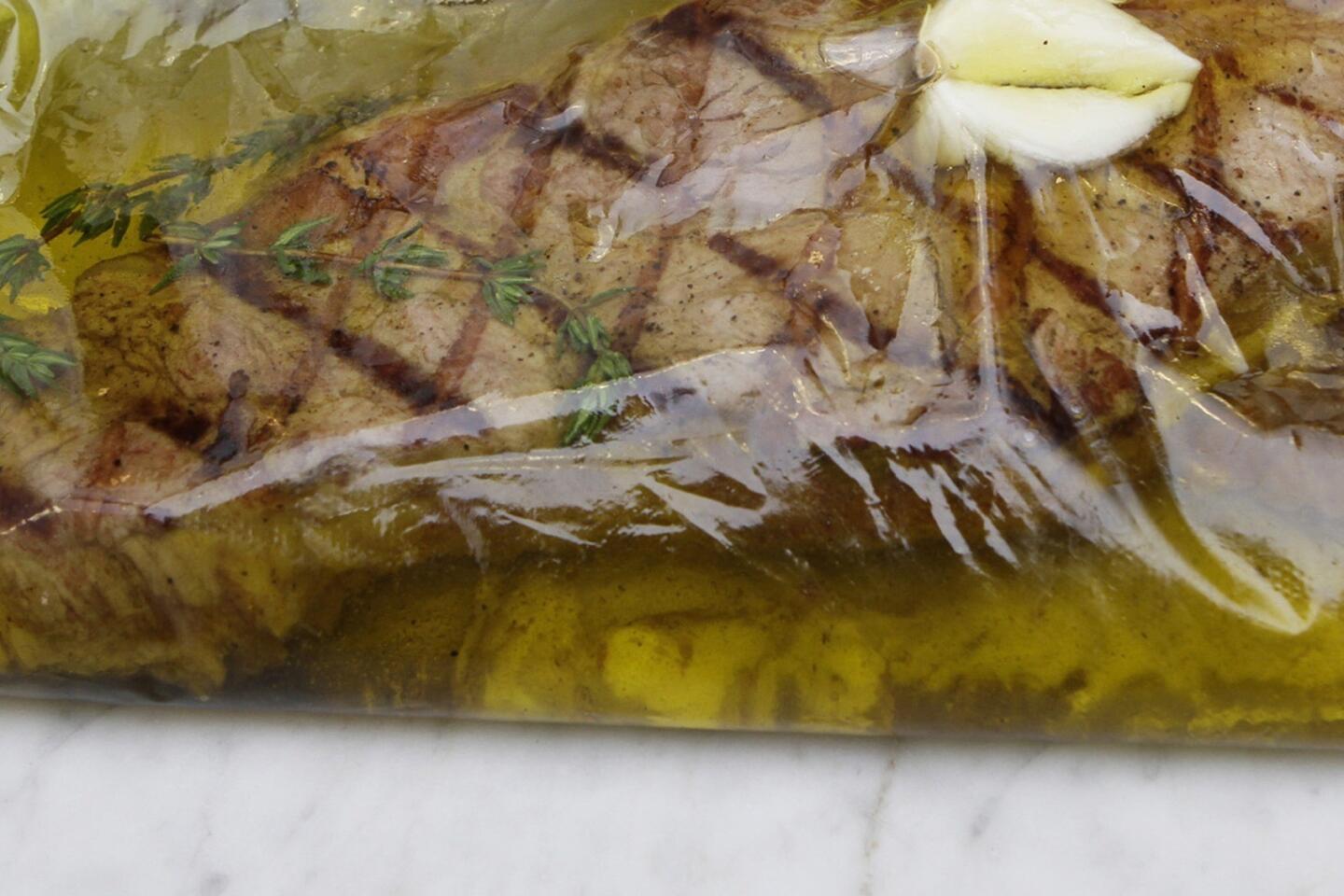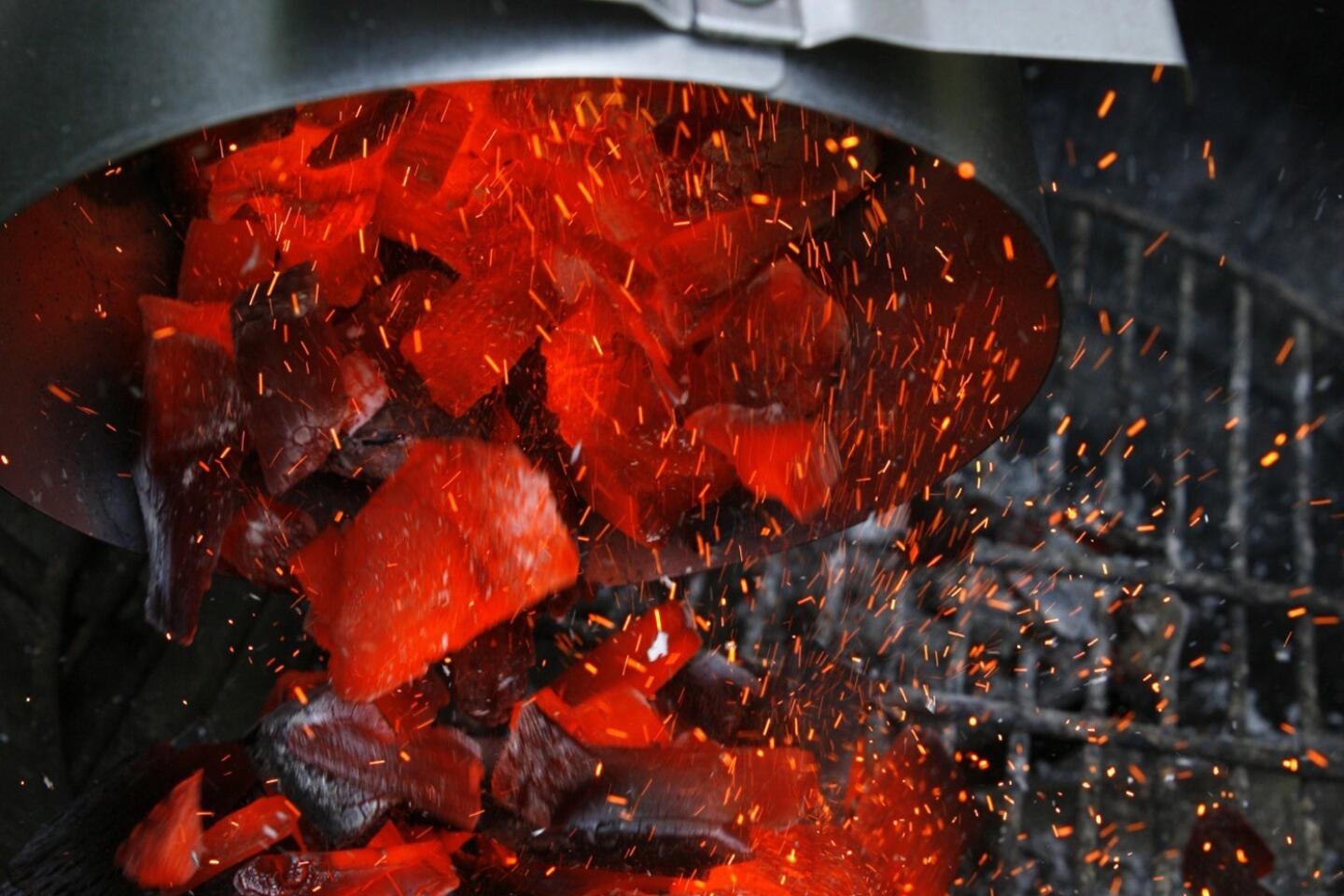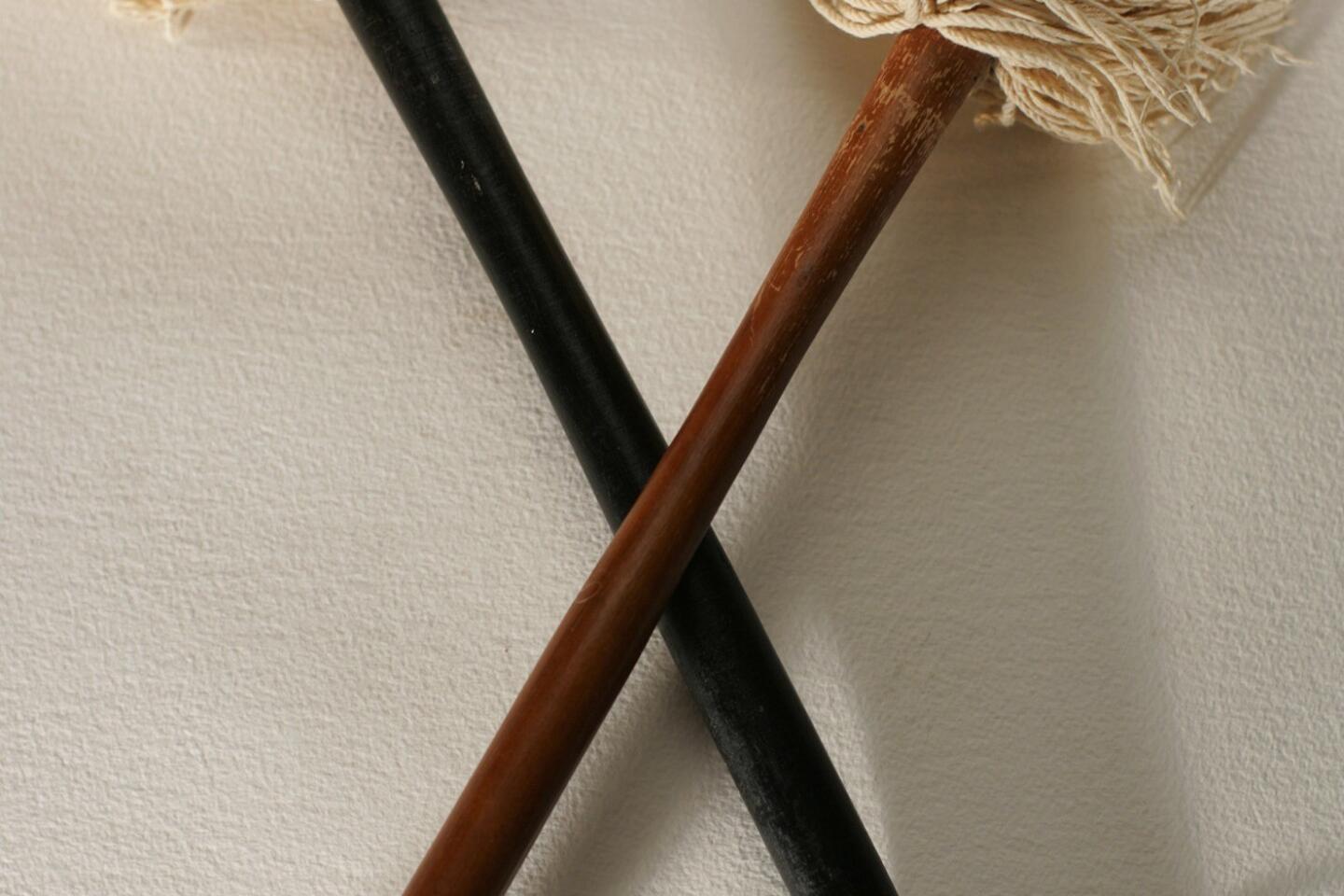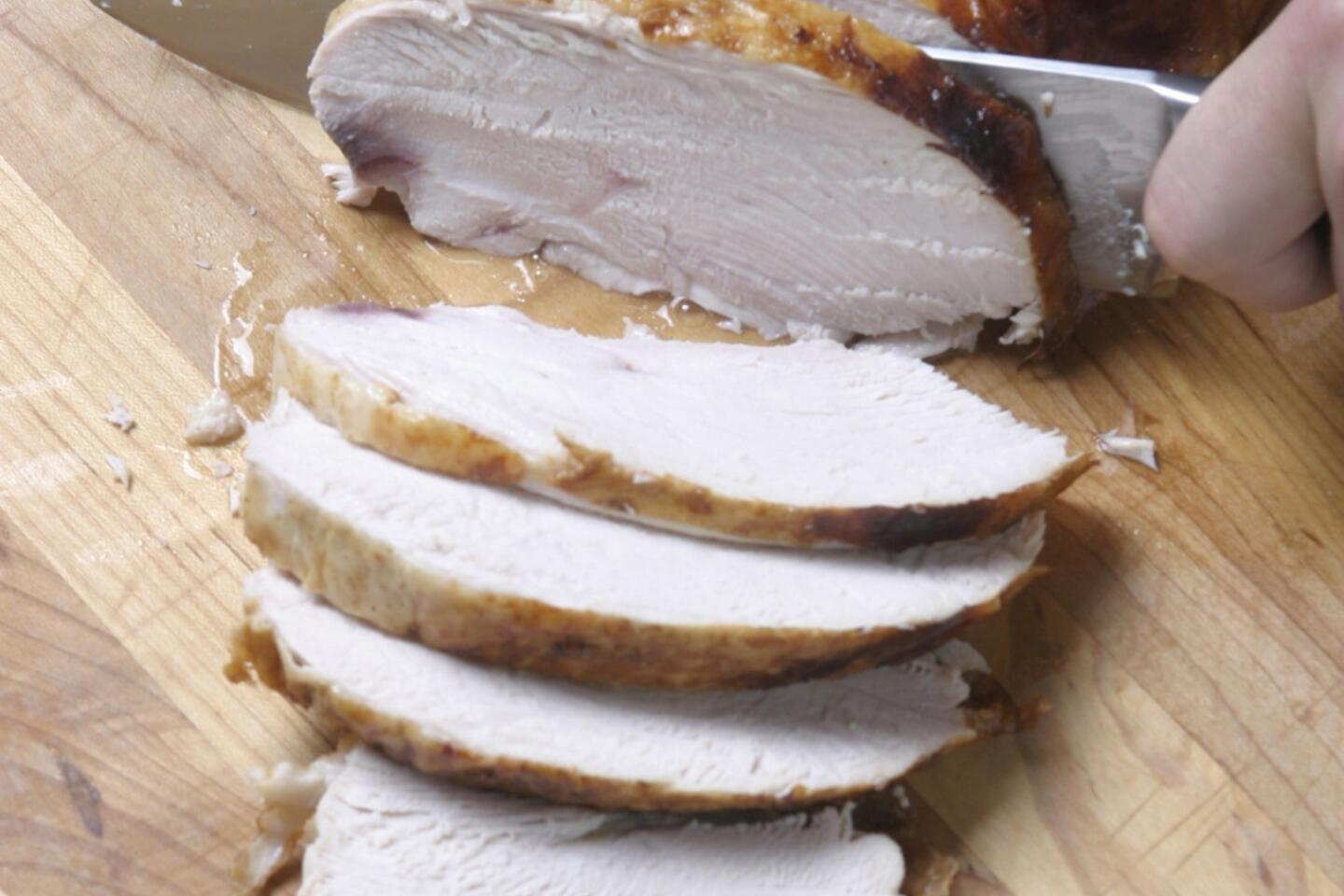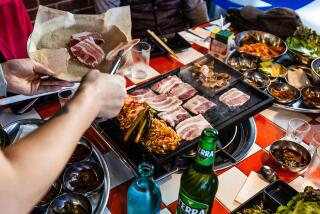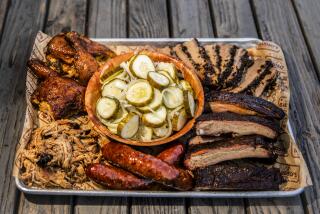Father’s Day: The six commandments of great grilling
Is it a coincidence that the start of the backyard cookout season coincides so neatly with Father’s Day? I think not. Certainly, we men have escaped the grill ghetto -- no longer is that the only thing we’re presumed to be able to do. But equally certainly, it is something that we do love to do, and do often. So we ought to do it well. Grilling is essentially a very simple way of cooking -- simple seasonings, simple cuts, simple techniques. So while Moses may have needed 10 commandments, I’ll offer only six.
Salt early, salt often. I learned the value of this from Zuni Café chef Judy Rogers. Every piece of meat that goes into her kitchen is lightly salted immediately, then bagged and put in the refrigerator. As almost everyone who has tried the now-famous “Judy Bird” dry-brined turkey will attest, the difference in flavor is remarkable. With the thin pieces of meat we typically cook -- steaks, chicken parts, chops -- even an hour head start is enough to make a difference. Allow about a tablespoon of salt for every five pounds of meat. And don’t forget to give another very light sprinkling after the cooking is completed. There’s nothing like a slight crunch of coarse salt to set off the flavor of juicy grilled meat.
SUMMER GRILLING: 15 of our best burger recipes
Ditch the long marinade. Yeah, I know -- you love the idea of putting together a glorious herbal bath for the meat to absorb overnight. How could that be wrong? Well, if it makes you happy, go ahead and do it, but it’s not going to do much more for the meat than a quick brush would. With even the longest soak, most marinades will only penetrate the outer 1/8 of an inch of the meat. And highly acidic marinades, like many popular salad dressings, will actually harm the meat. They “cook” the outside, much like a ceviche, making the surface mealy.
Build two fires. Not literally, but it’s helpful to think in those terms. For most grilling, you want two distinct zones -- one that is very hot for searing the meat, and another that is cooler to allow it to cook through evenly. This is easily accomplished by simply banking the hot coals against one side of the grill and leaving the opposite side empty. If you’re cooking with gas, you can accomplish the same thing by turning one side of the grill on high and leaving the other side on low, or even off.
Hold the sauce. At least hold it until the end. While the purist in me would like everyone to relish the pure flavor of meat perfectly cooked and adorned with only the simplest of garnishes (salt, pepper, olive oil, maybe an herb sauce), I realize that for a lot of cooks, the sauce is the thing. Fine. Hot-rod that jalapeno-strawberry barbecue sauce however far you want to take it. But don’t apply it until the very end of the cooking. Here’s the thing: most barbecue sauces contain at least a little bit of sugar. Applying sauce before the meat goes on the fire is a sure recipe for nothing but a nice black char.
SUMMER GRILLING: 15 of our best burger recipes
Give it a rest. As irresistible as it might be to slice into that hot, crusty steak as soon as it comes off the grill, restrain yourself. A rest on the cutting board of even five minutes for thin cuts and 10 minutes for thick will allow the juices in the meat to re-center. Cut it up too early and you’ll wind up with a big pool of juice on the platter; use a little restraint and almost all of it will stay in the meat, right where you want it.
Keep it clean. This probably goes without saying, but one of the biggest sources of food-borne illness at backyard barbecues is the meat platter. Someone loads it up with raw meat to take to the grill, and then stacks the cooked meat right back on top when they’re done. That almost ensures that any bacteria that were on the surface of the raw meat (the area where most of them are concentrated), will be transferred to the cooked meat, negating the sterilizing effect of the heat. There’s an easy solution that still lets you use the same serving piece -- line the platter with plastic wrap for the raw meat, and then remove it before piling on the cooked steaks.
ALSO:
Korean grilled fish at Cho Mak
Breakfasts and brunches for Father’s Day
More to Read
Eat your way across L.A.
Get our weekly Tasting Notes newsletter for reviews, news and more.
You may occasionally receive promotional content from the Los Angeles Times.
